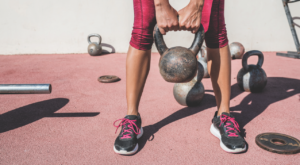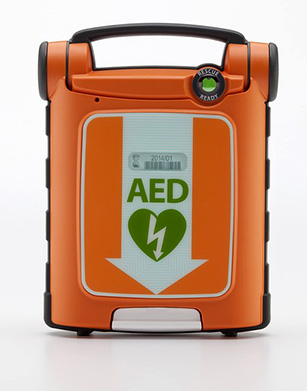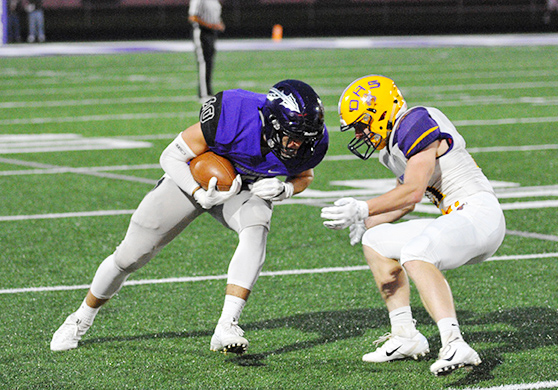Strength program design and exercise progression
There are many complex job functions of a strength coach, such as building programs and progressing exercises. In my opinion, this is one of the biggest challenges a strength coach faces. First and foremost, it’s imperative to have training philosophy. When the philosophy is established, it becomes a less complicated task to develop a program and progress exercises.
When developing your philosophy, the main focus should be on creating objectives and principles of training. This will clearly define what it is you are trying to achieve with the individuals you work with. My philosophy is built around objectives and principles that I believe are going to be the most effective ways to get the individuals I work with to achieve success. My objectives are to reduce the risk of injury and maximize athletic performance.
Training principles
√ Ground-based movements. Nearly every sport is played with the feet on the ground, which is a valid reason to incorporate ground-based movements in the training program. Much of performance capability requires optimal force production for speed and power. Performing these movements helps improve those qualities.
production for speed and power. Performing these movements helps improve those qualities.
From an injury standpoint, ground-based training is an excellent way to prevent sports injuries. Many injuries, such as ACL tears, are caused by ground-based contact, so performing exercises like Olympic lifts, squats, plyometrics and agility training not only maximizes athletic performance, it reduces risk of injury as well.
√ Multi-joint movements. Human movement, especially in sports, requires a series of complex movements. The body is required to work synergistically, integrating different muscles and joints in different locations to perform movements that require multiple joint actions. Examples of this include running, jumping and throwing. For this reason, it’s important to perform movement patterns that are multi-joint in nature.
√ Multiplanar-based movements. The body not only performs multi-joint actions during movement, it works in multiple planes as well. Sport activity requires movements that are side to side, up and down, forward and back, and rotational. Due to these requirements, it’s important to train in multiple planes because the body will be better equipped to perform the specific demands of the activity.
To train this way, it’s necessary to use free weight and body weight exercises, because this type of training allows the body to perform movements in multiple planes of motion. Training with machines does not allow this to happen, so it’s important to use equipment like free weights and medicine balls to get the most benefits from training.
When building programs, I use this philosophy to determine the approach I am going to take in designing and implementing them.
Identifying individual needs
The next step in the process is determining the needs of each athlete. This may include rehab, flexibility, strength training, speed development or conditioning. After that determination is made, the basis of the program becomes a more clearly defined process.
Since the objectives are to prevent injuries and maximize performance, I make sure to incorporate exercises in the program based off the needs of the individual with these goals in mind. A workout for a healthy athlete may look something like this:
- Soft tissue work (foam rolling, trigger point, breathing).
- Glute/muscle activation (mini-band exercises).
- Dynamic warmup.
- Speed and agility training.
- Explosive/power-based exercises (Olympic lifts, plyometrics, medicine balls).
- Strength training (upper body/lower body, pre-hab, torso stability training).
- Conditioning (interval conditioning).
- Stretch/recovery (static/PNF stretching).
Structuring a program like this allows for a balanced workout that incorporates all aspects of training that helps prevent injuries while maximizing athletic performance.
Exercise progression
My approach to exercise progression is a step-by-step process that can’t really be followed by a book. I believe progressing exercises is an ability that’s developed through experience and trial-and-error. The most important factor in going through progressions is to know when to progress them. Some factors that influence progression include movement, strength, range of motion, balance and coordination.
This is a general guideline that I use when programing with exercise progressions.
√ Eccentric/isometric/concentric. Research shows that most muscle development is gained through the lengthening of muscle under tension (eccentric). From a movement standpoint, it’s much easier to do the downward lengthening portion of an exercise. This is why I believe in starting progressions at the eccentric portion of an exercise. From there, the exercise can be progressed to holds (isometric) to upward, shortening movements (contracting). The strength can be developed through the eccentric and isometric variations and fully enhanced by performing the full movement with contraction.
√ Bilateral/unilateral. Free weight and body weight exercises are generally easier to perform with two limbs (bilateral) than a single limb (unilateral). Bilateral exercises require less balance, motor control and less work capacity then unilateral exercises. This is why I believe in setting the bilateral exercises as the most basic progression before transitioning to unilateral exercises.
√ Easy to hard. It’s important to think about steps when progressing exercises. An easy way to track progressions is to have steps that go from easy to hard.
When designing my progressions, I think of ways to make an exercise very basic and then I design a progression to make more difficult. This can include going from two limbs to one limb, changing body positions, and going from stable surfaces to unstable surfaces.
Using this guideline helps me to breakdown steps when progressing exercises. Take the time to think through the progression, experiment with exercises, and develop your own guideline. Building a progression program is a huge benefit to a strength and conditioning coach, because it can adhere to different levels of capability and add variety to a program.
Jeff Brodeur, CSCS, USAW, is a strength and conditioning specialist at The Micheli Center for Sports Injury Prevention. Learn more at www.themichelicenter.com.





